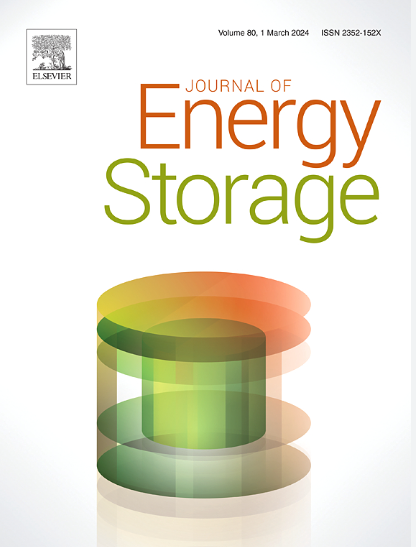Mn-MOF-derived litchi-like MnO/MnS@C heterojunction cathode material for high-performance aqueous zinc-ion batteries
IF 8.9
2区 工程技术
Q1 ENERGY & FUELS
引用次数: 0
Abstract
Manganese-based materials are commonly employed as cathodes in rechargeable aqueous zinc-ion batteries (AZIBs) due to their high theoretical capacity, minimal toxicity and low cost. However, poor conductivity, sluggish charge diffusion kinetics, and unfavorable lattice distortion caused by Jahn-Teller effects are still hindering their practical application. Herein, a litchi-like MnO/MnS heterojunction composite cathode material (MnO/MnS@C) was prepared through carbonization-sulfidation derived from spherical manganese-based metal-organic framework (Mn-MOF). The litchi-like morphology of MnO/MnS originates from hydrothermal sulfidation etching, which facilitates the formation of numerous electrochemically active heterointerfaces. Benefiting from the synergistic effects of built-in electric fields in heterojunctions and abundant ionic defects, the MnO/MnS@C demonstrates significantly improved conductivity and charge transfer kinetics. Furthermore, the conformal carbon layer ensures the structural stability of the MnO/MnS@C heterojunction. As a result, the as-prepared MnO/MnS@C cathode for AZIBs delivers a specific capacity of 238 mAh g−1 at 0.3 A g−1, with 175 mAh g−1 at 2.0 A g−1, and the capacity retention rate is 82.7 % after 4000 cycles. Ex-situ characterization reveals the charge storage mechanism of MnO/MnS@C, providing valuable insights for developing high-performance zinc-ion battery cathode materials.

mn - mof衍生荔枝状MnO/MnS@C异质结高性能锌离子电池正极材料
锰基材料具有理论容量大、毒性小、成本低等优点,被广泛应用于可充电水性锌离子电池(AZIBs)。然而,电导率差,电荷扩散动力学缓慢,以及由扬-泰勒效应引起的不利晶格畸变仍然阻碍了它们的实际应用。本文以球形锰基金属有机骨架(Mn-MOF)为原料,通过碳化硫化法制备了荔枝状MnO/MnS异质结复合正极材料(MnO/MnS@C)。MnO/MnS的荔枝状形貌源于水热硫化蚀刻,有利于形成大量电化学活性异质界面。得益于异质结内置电场和丰富离子缺陷的协同效应,MnO/MnS@C的电导率和电荷转移动力学得到了显著改善。此外,共形碳层保证了MnO/MnS@C异质结结构的稳定性。结果表明,制备的MnO/MnS@C azib阴极在0.3 a g−1时的比容量为238 mAh g−1,在2.0 a g−1时的比容量为175 mAh g−1,经过4000次循环后的容量保持率为82.7%。非原位表征揭示了MnO/MnS@C的电荷存储机制,为开发高性能锌离子电池正极材料提供了有价值的见解。
本文章由计算机程序翻译,如有差异,请以英文原文为准。
求助全文
约1分钟内获得全文
求助全文
来源期刊

Journal of energy storage
Energy-Renewable Energy, Sustainability and the Environment
CiteScore
11.80
自引率
24.50%
发文量
2262
审稿时长
69 days
期刊介绍:
Journal of energy storage focusses on all aspects of energy storage, in particular systems integration, electric grid integration, modelling and analysis, novel energy storage technologies, sizing and management strategies, business models for operation of storage systems and energy storage developments worldwide.
 求助内容:
求助内容: 应助结果提醒方式:
应助结果提醒方式:


